TwoHeadsBrewing
Well-Known Member
I was reading in this months BYO magazine and caught Jamil's article about the Imperial IPA. I think it's time I did one, and I'd like you to critique my recipe below. It follows fairly close to the article, but I'd like to get some input/suggestions. Thanks!
Grain & Sugars
5.0# US 2-row Pale
11.0# Marris Otter 2-row
0.50# Crystal 60L
1.0# White Wheat Malt
0.25# Special B
1.50# Dextrose
Hops
60m - 2.00oz Magnum (14%)
30m - 1.00oz Centennial (10%)
15m - 1.00oz Centennial (10%)
5m - 2.00oz Cascade (5.5%)
Dry Hop - 1.00oz Centennial (3 days)
Dry Hop - 2.00oz Cascade (3 days)
Yeast
White Labs WLP051 - California Ale V
Mash Schedule
Mash in with 5.5g @ 150F for 75m (long mash for low final gravity)
Single Batch Sparge: 5.2g @ 175F
No Mash Out
Collected 8-8.25 gallons of wort (left out 1 gallon of the last runnings, therefore lower efficiency )
)
Brewhouse Eff @ 60%
OG Est: 1.085 (actual 1.082)
FG Est: 1.020
Est ABV: 8.31%
IBU: 109.3
Color: 12.4 SRM (copper)
Fermentation Schedule
7 days @ 68F
14 days @ 72F (dry hop on day 18 for a total of 3 days)
Crash cool, and force carb in keg @ 21 days from brewing. Cold condition for another 7 days (tasting a bit every day of course ).
).
Grain & Sugars
5.0# US 2-row Pale
11.0# Marris Otter 2-row
0.50# Crystal 60L
1.0# White Wheat Malt
0.25# Special B
1.50# Dextrose
Hops
60m - 2.00oz Magnum (14%)
30m - 1.00oz Centennial (10%)
15m - 1.00oz Centennial (10%)
5m - 2.00oz Cascade (5.5%)
Dry Hop - 1.00oz Centennial (3 days)
Dry Hop - 2.00oz Cascade (3 days)
Yeast
White Labs WLP051 - California Ale V
Mash Schedule
Mash in with 5.5g @ 150F for 75m (long mash for low final gravity)
Single Batch Sparge: 5.2g @ 175F
No Mash Out
Collected 8-8.25 gallons of wort (left out 1 gallon of the last runnings, therefore lower efficiency
Brewhouse Eff @ 60%
OG Est: 1.085 (actual 1.082)
FG Est: 1.020
Est ABV: 8.31%
IBU: 109.3
Color: 12.4 SRM (copper)
Fermentation Schedule
7 days @ 68F
14 days @ 72F (dry hop on day 18 for a total of 3 days)
Crash cool, and force carb in keg @ 21 days from brewing. Cold condition for another 7 days (tasting a bit every day of course



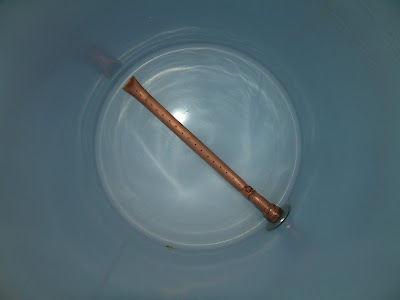
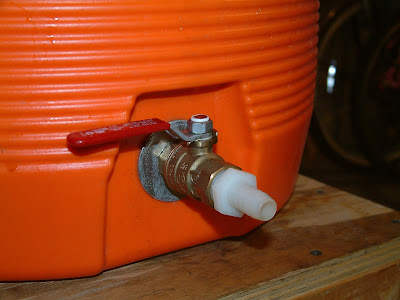
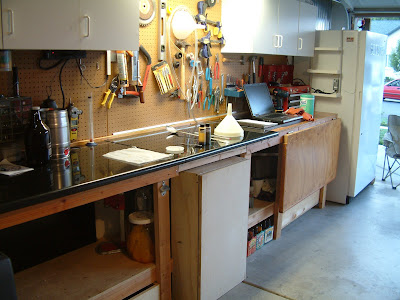
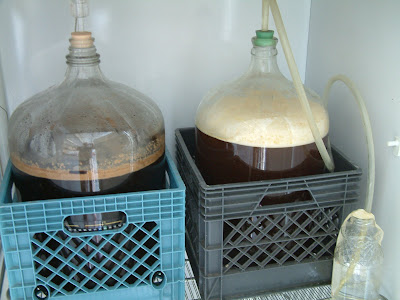
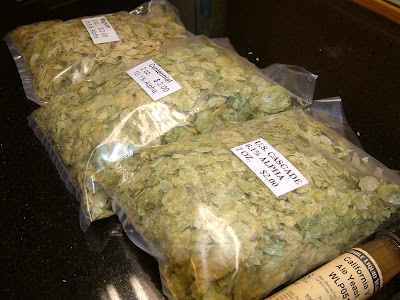
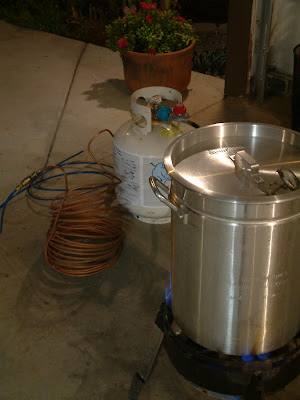
 sounds like a good plan - recipe?
sounds like a good plan - recipe?